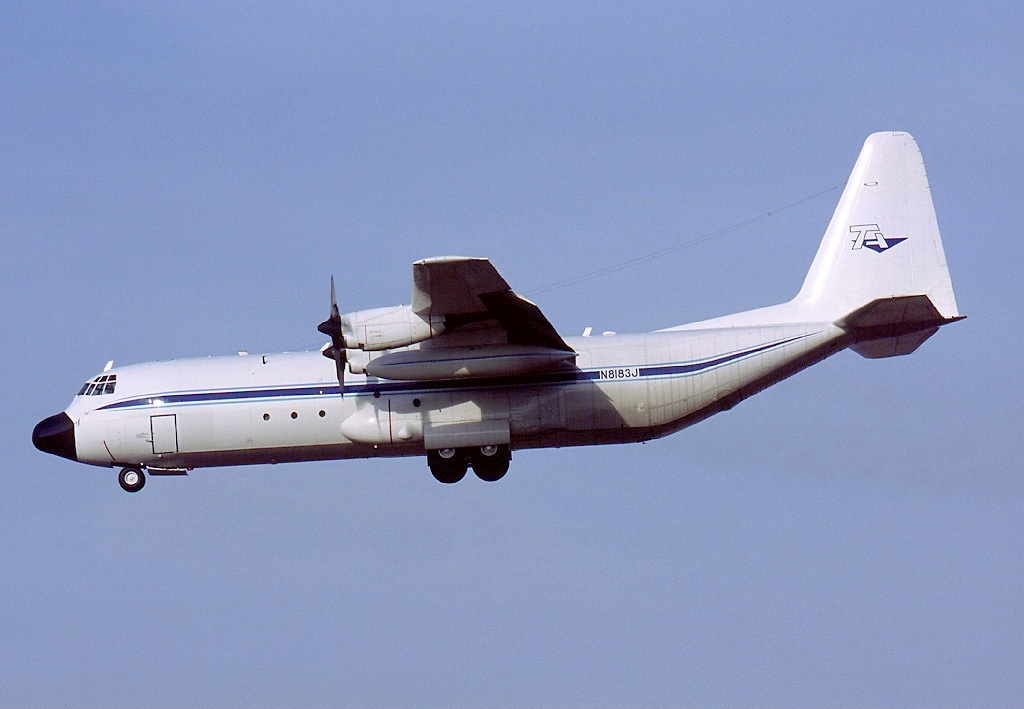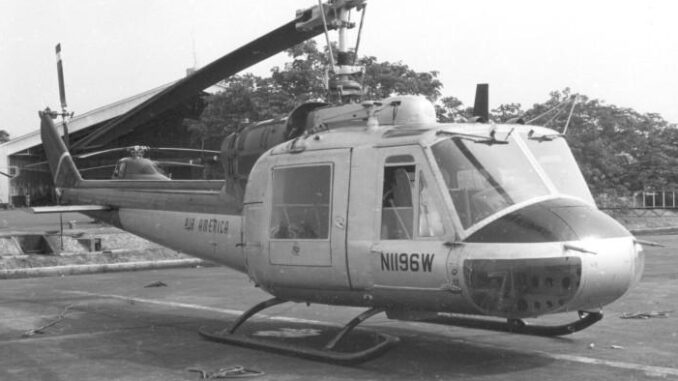
In 1968 the Vietnam War was at its peak. This was already a third consecutive year of Operation Rolling Thunder, considered as the most intensive air-ground offensive of the Cold War period. Since 2nd March 1965, the United States Air Force, the United States Navy and the Republic of Vietnam Air Force (RVNAF, South Vietnam) were performing a common air raids against the North Vietnamese Army (NVA or PAVN).
The purpose of the offensive was to destroy the transportation system, industrial base and NVA air defence and therefore to stop the northern communists in supporting the communist rebels in South Vietnam – all without involving the US ground forces. Those attacks proved to be so much effective, leading the North Vietnam Army command to conclusion of striking back, a conclusion, in consequence of which the most unusual aerial combat in history had happened.
Before we go any further, the background to this situation would be worth mentioning. The commonly known fact is, that the US involvement in Vietnam War has officially begun on 1st November 1955, when Dwight Eisenhower, then President of the United States of America, decided to deploy the Military Assistance Advisory Group to Indochinese Peninsula, in order to train the Republic of Vietnam Military Forces (RVNMF, South Vietnam).
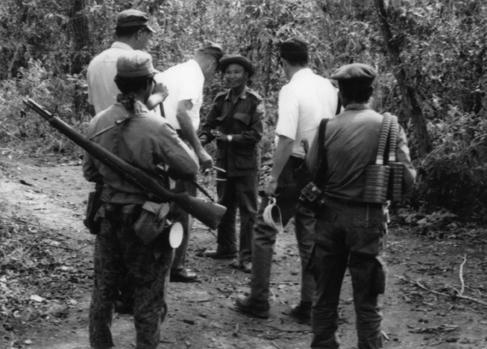
Nevertheless, a less known fact is, that the USA have been active in Southeastern Asia a lot sooner, but unofficially. Since the very beginning of 1950s, the Central Intelligence Agency played a key role in every aspect of Indochina Wars, and this, certainly, included the Vietnam War, in which the United States and their allies supported the South Vietnam.
At the time of the Second Indochina War, the CIA personnel stationed in facilities established not only within the territory of South Vietnam, but also in the surrounding countries – Cambodia and Laos. In this respect, it should be noted that, since 23rd July 1962 and in accordance to the International Agreement of the Neutrality of Laos signed by 14 countries, Laos was officially recognized as neutral in the Vietnam War.
Even though those CIA facilities were officially recognized as radar stations, their crews were responsible for training volunteer guerrillas from ethnic minorities of the region, such as Hmongs, Khmers or Montagnards; and mercenaries from Thailand and Taiwan. In addition, they were providing a broad assistance for the US and South Vietnamese forces and supporting volunteer activities in the North Vietnam territory.
The Central Intelligence Agency also arranged some operations which were aimed at blocking the Ho Chi Minh Trail – a military supply route running from North Vietnam through Laos and Cambodia to South Vietnam. All those CIA activities were actively supported by Civil Air Transport, a former Nationalist Chinese airline now owned by the agency and since 1959 known as Air America, and later became famous by the big-budget comedy film from 1990 with Mel Gibson and Robert Downey Jr.
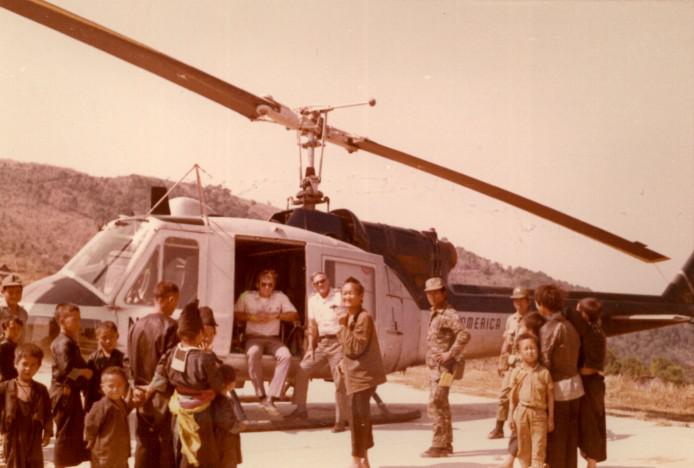
Lima Site 85, also known as Channel 97, was one of such CIA radar posts, established on top of Phou Pha Thi mountain in Laos. The peak of this jungle-surrounded ´sacred mountain´, located relatively close to then North Vietnam border and only 231 kilometres from Hanoi, is 1,786 meters (5,860 feet) high and its rocky slopes are extremely steep. Therefore, Lima Site 85 could be accessed in two ways: first, the footpath, a narrow and very difficult trail along the mountain slope; and second, seeming to be much easier, by air. And this caused Phou Pha Thi was found to be a perfect place to establish an American radar base there.
Nevertheless, the official neutrality of Laos and therefore impossibility of conducting any official US military activity in the country did not make it easy to build such a facility there. The initial proposal of creating the radar post at Phou Pha Thi had to be approved by US Ambassador to Laos, William H. Sullivan and then by the Laotian Prime Minister, Prince Souvanna Phouma. Despite Sullivan´s concern about securing an approval of Prince Phouma, who was in opposition to involving Laos in military operations against North Vietnam, the Prime Minister finally agreed. He made it a condition, however, that no US military forces would be stationed there.
Following this order, the Tactical Air Navigation system (TACAN) – in other words, an autonomous radio transmitter – was built on top of Phou Pha Thi in August 1966, providing distance and bearing data for the US aircraft crews. A year later, the base was upgraded with TSQ-81 system, code-named ´Heavy Green´. Since then, the Lima Site 85 was able to navigate the aircraft based in South Vietnam and Thailand, as F-4, F-105 and A-1 fighter-bombers and A-26 night bombers; allowing them to perform precise raids on the North Vietnamese targets. In 1967 the Heavy Green project became Operation Commando Club, a Combat Skyspot operation for ground-directed bombing of Red River Delta targets.

Although, to achieve the full potential of the devices installed at Lima Site 85, the personal service was needed there. Taking into the consideration the aforementioned condition, the volunteered US Air Force radar operators sent to Phou Pha Thi were ´sheep-dipped´ as civil Lockheed Martin workers.
In reality, however, they were members of the USAF Circuit Rider teams, 1st Mobile Communications Group, based at Udorn, Royal Thai Air Force Base. The site security had to be assured by group of approximately 1,000 Hmong guerrillas, 300 members of the Thai Border Patrol Police paramilitary service and, certainly, by the CIA officers. The established Landing Zone and a 700 metres (2,300 feet) long airstrip built just at the foot of Phou Pha Thi, the Lima Site 85 was supported by Air America, similar to other CIA bases.
The airline secured the biweekly crew rotation, delivered necessary supplies, equipment and armament. According to some sources, the Lima Site 85 had to be also additionally supported by the 20th Special Operations Squadron based at Udorn, the same air base the radar crew came from.
Being the most northerly located CIA base in Laos, the Lima Site 85 played a significant role in the conflict, including the already mentioned Operation Rolling Thunder. It is estimated that, until the late 1967, the Phou Pha Thi base was responsible for guiding 55% of all aerial attacks performed on targets in North Vietnam. Apart of those tasks, the station provided the navigation data for helicopter rescue missions and was overseeing the US special operations and Hmong guerrilla activities in North Vietnam.
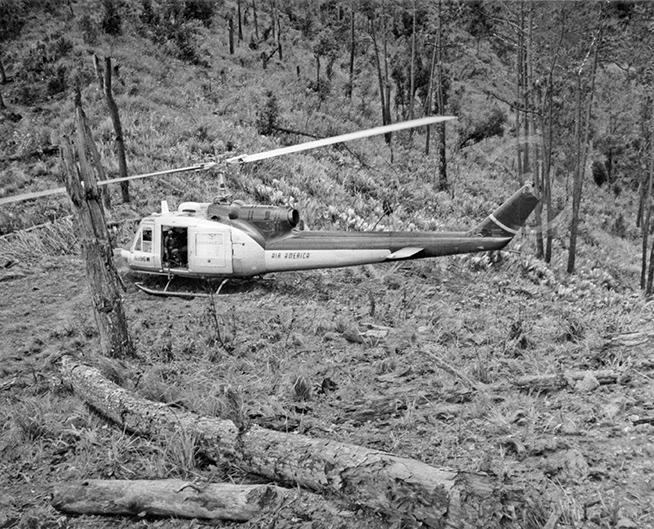
And this was the main reason why the Lima Site 85 became the target of the NVA revenge operation. The remote location of Phou Pha Thi was considered by the NVA command as too risky for the classic ground forces assault; therefore the air raid was planned – being one of the only few airborne operations performed by the NVA during the entire conflict.
The choice of aircraft to be used in assault on Lima Site 85 in itself may seem a bit peculiar, as four Antonov An-2 biplanes were chosen. And, not being the attack-aircraft by their design, the North Vietnamese Air Force (NVAF) An-2s had to be specially prepared and armed for the purpose of the planned operation.
All aeroplanes received the folding-fin aerial rocket pods, each housing twelve 57mm rockets, mounted under the lower wing. In addition, the An-2s were equipped with twenty 250mm mortar rounds, having the aerial bomb fuses. Those makeshift ´bombs´ could be dropped by a simple, improvised release mechanism and tubes installed for this purpose in the aircraft floor.
And here the story of the most bizarre air combat begins…
On 12th January 1968, all four aeroplanes took-off from a base located in north-eastern part of North Vietnam, heading towards Laos. They appeared over the Lima Site 85 in the afternoon and the initial formation of four An-2s divided into two pairs.
Two aircraft have begun their attack on the base and two were circling above the target, probably directing the raid. The base personnel was surprised, not expecting the attack, but fortunately – due to the fact that the Lima Site 85 buildings were well camouflaged, the first An-2 attacked a less important building, wrongly identified by the aircraft crew as the radar facility.

The first explosions alarmed the base personnel, one of the Thai Border Patrol Police officers stormed out and opened fire to the attacking aeroplanes, emptying the magazine of his AK rifle. Surprisingly, it seems that one of An-2s was hit, because a moment later the NVAF biplanes aborted the assault and, still flying in two-pair formation, headed to the border.
In the meantime, an unarmed Air America Bell 205 (civil designation of UH-1D Huey) helicopter, carrying the weapon supplies for Lima Site 85, was approaching the base. Its crew, pilot Ted Moore and flight mechanic Glen Woods, noticed what was happening at Lima Site 85 and decided to engage the enemy biplanes.
Moore directed the helicopter to the first pair of An-2s, the one that performed the initial attack, while Woods grabbed and loaded one of AK automatic rifles they were delivering to the radar base. The NVAF biplanes were flying slower than Huey, so Moore managed to approach them close enough, still staying hidden to the An-2 crews. Woods opened fire from his AK, targeting the last aircraft in the formation.
While being engaged in this action, the Huey crew noticed that the first NVAF biplane crashed on a mountain ridge. A moment later, they spotted another An-2 flying below their helicopter. Woods opened fire again, hitting the upper wing of the biplane and damaging it – hard enough to make An-2 descend.
As soon as the biplane was slowing down, Moore approached even closer and Woods fired again, this time aiming at the cockpit and, probably, either wounding or killing both An-2 pilot and co-pilot. The North Vietnamese biplane stalled, then went into a flat spin and crashed close to the border.
After shooting down this biplane, the Huey turned back to Lima Site 85. The remaining two An-2s returned safely to North Vietnam.
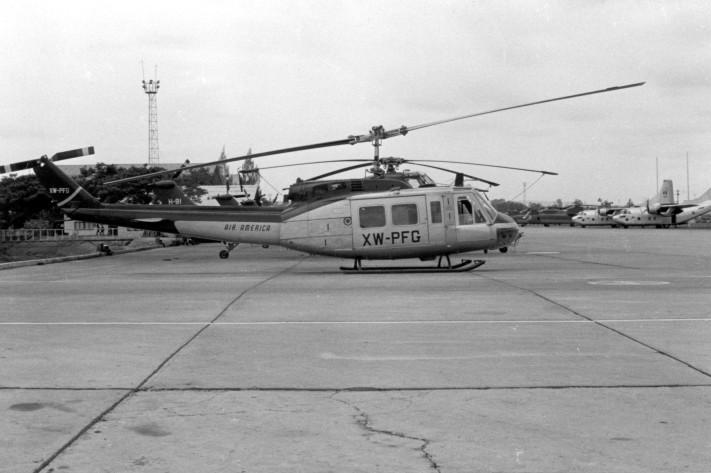
Shortly afterwards, a team led by CIA officers managed to find out the An-2 wreckages, confirming that there were bullet holes in both of the biplanes. One of them was, without any doubts, shot down by Moore and Woods, however it still remains unclear who hit the other An-2. It is highly likely that the Thai police officer and Air America Huey crew were shooting at the same aircraft.
Taking this into account and comparing the information from other sources, that, unfortunately, differ from each other, it is almost impossible to confirm who fired the lethal shot, causing the crash of the second biplane.
The official historical document issued by the CIA states, that the Huey crew was targeting two different An-2s but confirms only one of them was shot down by Moore and Woods. A few other sources, while describing events from 12th January 1968, says the biplane was downed by the Thai Border Patrol Police.
Nevertheless, the confirmed aerial victory of Air America helicopter over the NVAF An-2, is the first ever – and still the only one – air combat in which the helicopter shot down the enemy biplane. In addition, it was also the first recorded air-to-air victory of CIA, as the engaged party. Together with all other described factors, shooting down this An-2 biplane, is without any doubts one of the most bizarre aerial combats ever happened.
During the An-2 assault on Lima Site 85, four Hmong volunteers were killed. The radar facility, TSQ-81 and other equipment, haven´t sustained any damage. Shortly thereafter, the remains of one of the NVAF An-2s were displayed in Vientiane, in front of the most important Buddhist temple in Laos – as a proof of the North Vietnamese military activity in Laos.

And what happened next to Lima Site 85? Ignoring the experience from the 12th January the US Embassy in Laos and the USAF neither changed the status of the site nor organized any additional defence of the facility. This has not been done even in the following weeks, when the North Vietnamese activity in the close vicinity of Lima Site 85, significantly increased.
During the night of 9th and 10th March 1968, more than 3,000 soldiers from North Vietnam 766th Regiment and Pathet Lao (communist political movement in Laos), surrounded the Phou Pha Thi mountain and the next day the artillery assault began.
During the early hours on 11th March the North Vietnamese forces launched their attack and by 0635 hours in the morning, they already controlled the entire TACAN area. The surviving Lima Site 85 personnel was evacuated by Air America helicopters, covered by A-1 Skyriders. By noon, the whole area was secured by PAVN forces.
From the moment the Phou Pha Thi mountain area and Lima Site 85 were under the North Vietnamese control, the USAF focused on destroying the radar facility – between 12th and 18th March 95 strike sorties were confirmed, concluded by the final attack on 19th March, performed by A-1 fighter-bomber and destroying every single remnant of Lima Site 85.

Title cover photo: Air America Bell helicopter in Laos (VA024801, Allen Cates Collection, The Vietnam Center and Archive, Texas Tech University)
Sources: ‘An Air Combat First’ Historical Document of Central Intelligence Agency at the CIA official website (cia.gov), ‘When The CIA Shot Down An AN-2 Biplane From A Huey Helicopter’ by Jay Hemmings at War History Online (warhistoryonline.com), ‘Battle of Lima Site 85’ at Wikipedia The Free Encyclopedia (wikipedia.org)


